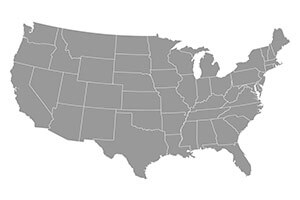U.S. Honey Crops and Markets
Crop and Market – January 2024

Most of the country reports decent honey production for the year, despite spotty drought conditions and a widespread heat wave in late summer/early fall.
Wholesale markets are stronger than before the imposition of duties from the AHPA’s antidumping lawsuit, though abnormally low import prices continue to put some downward pressure on commodity markets. Where retail markets are concerned, demand for local honey seems stronger than ever. Consumers and small markets mostly seem resigned to continued inflation, as beekeepers raise honey prices in an effort to catch up to the rising costs that have beaten down profits over the past couple of years.
Northeast
In Pennsylvania, retail demand is still soaring as consumers see the value in local honey. They have also gotten used to rising prices, and beekeepers have been able to raise retail honey prices to make up some of their own rising costs. Interest in varietals is increasing, and even comb honey is making a comeback. Colonies are mostly looking good, with adequate stores going into winter.
In New Hampshire, early rains set the stage for strong honey production. Beautiful fall weather not only helped late nectar sources like goldenrod and knotweed, but boosted sales at farmers markets and outdoor events. Bees were looking fair to good as of mid-November.
Most of New York saw good fall flows due to warm and moist conditions, though summer/fall drought slowed things down in the west. Honey prices increased along with demand throughout the state.
Maine’s honey demand remains high as well, and strong crops this year will help local beekeepers to meet it.
Mideast
Dry summer weather stifled fall honey production in Tennessee, where asters and goldenrod were among the strongest crops. Demand and pricing for local honey continue to rise.
Warm, dry fall weather in Kentucky spurred good fall nectar flows, led by goldenrod, ironweed, smartweed and asters. Beekeepers were fighting strong mite and hive beetle populations this fall.
Virginia honey crops varied by region; drought hurt production in the north, while other areas saw better than average crops. Retail prices are rising, and colonies were looking fair to good in November.
Southeast
Florida’s Brazilian pepper crop improved somewhat but has not bounced back completely from damage due to 2022’s Hurricane Ian, and late-summer heat did not help. But production was helped by strong goldenrod and Spanish needle crops.
Alabama’s honey crops were down by a third to a half, including late, low fall crops due to drought. Consumers continue to look for local honey, and beekeepers are responding. Direct-to-consumer sales and home delivery are effective, and the idea of Alabama-certified honey is gaining support.
Southwest
The early nectar flow was weak in East Texas, but fall crops were better despite a late-summer heat wave across the state. Retail demand has been higher than ever, with more demand for larger sizes including gallons, meaning supplies for many will not hold out until spring.
East Central
llinois honey crops suffered from early-season drought, though fall goldenrod and asters provided much-needed nectar. Demand has been strong at wholesale and especially retail levels.
Wisconsin saw hot temperatures in late summer and early fall, after better than average honey crops earlier in the year. Demand for local honey remains high, especially on the retail side.
It was hot and dry in Indiana in early fall, and nectar crops suffered to some degree. Honey prices largely remain unchanged from summer.
West Central
There was little surplus fall honey produced in eastern Missouri, but a long, copious nectar flow in spring and early summer, including that rare perfect year for black locust, was enough to ensure an excellent honey year prior to the summer drought. Retail sales are still quite strong, and consumers are remarkably accepting of increased honey prices in this era of inflation.
In Kansas, interest in beekeeping and honey continue to grow. Hobbyists in major cities are selling more honey than they can produce themselves, and some are themselves falling victim to scammers selling bees. Honey prices are rising at the retail level. Colonies are in mostly good condition going into winter.
Better ground moisture in the Dakotas meant honey crops were up somewhat from last year, though still a bit below normal.
Intermountain
Colorado’s colonies are in good condition going into winter, with fair to good honey stores. Honey prices are holding steady.
West
Northern Washington beekeepers report an odd year; drought caused poor honey production for most, but those within range of recently burned-out areas saw a bumper crop of fireweed honey, while others benefited from knotweed. a recent invasive. Southwest Washington had a better year overall. Demand for local honey has been excellent, both retail and wholesale, especially in the fall as more are using it for baking. Condition of colonies going into winter is mostly good statewide.


